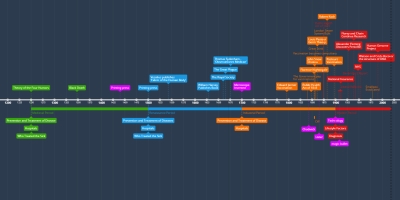jan 1, 1500 - Who Treated the Sick
Description:
Not much changed in the way the pubic were treated in the renaissance period. Most people who fell ill were still cared for by female relatives and a local wise women. Physicians were still to expensive for the majority of people.Physician Continuity:
- Medically trained at university for many years but it was still based on textbooks with no practicals.
Physician Change:
* Better access to a greater variety of books due to printing press.
* Vesalius inspired some to do more practicals as his ideas were gradually accepted.
* Dissection was legalised but it took a while to become common place
Apothecary and B-S Continuity:
- Cheaper than physicians
- Considered inferior to physicians
- Not given any university training
Apothecary and B-S Change:
* Better trained through 'guild systems' (e.g. there were levels: apprentice, journeyman then master)
* A licence was need to work as a apothecary or B-S that were only issued after training
Care in the home remained the same other than new foreign herbal remedies being indroduced.
The renaissance physicians was very different to a medieval physician. The approach to diseases became very scientific and physicians gradually began to improve. This is greatly due to the work of people like Sydenham. 1. As fewer people believed in astrology physicians gradually began to stop using astrology charts. 2. Due to increased knowledge of the digestion system, physicians realised that urine was a bad indicator of disease so they stopped using urine charts for diagnosis. 3. Physicians began to observe the symptoms of the patients and not just rely on the patient to explain the symptoms.
Added to timeline:
Date:
jan 1, 1500
Now
~ 525 years ago
